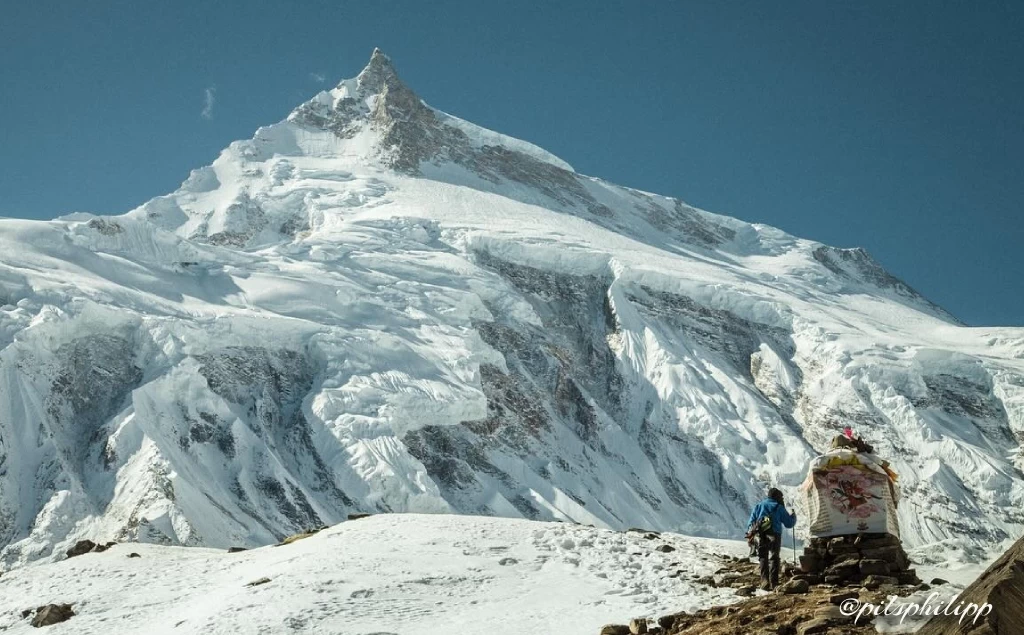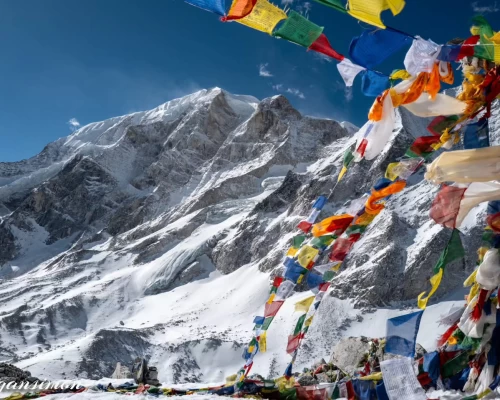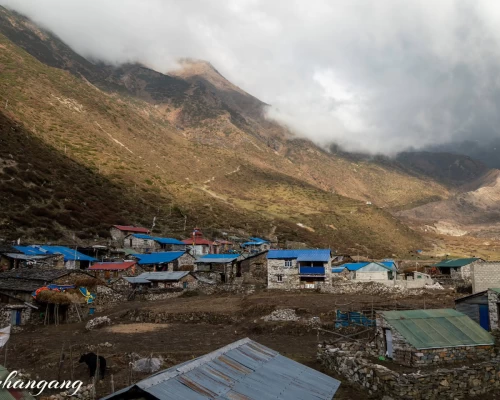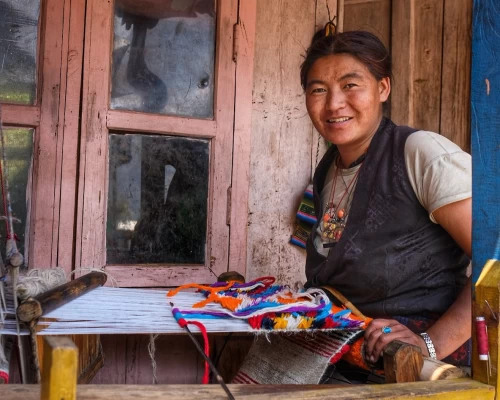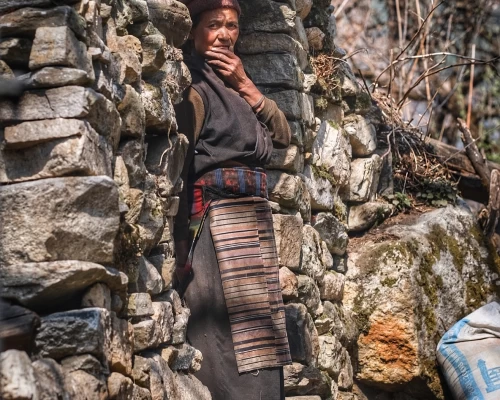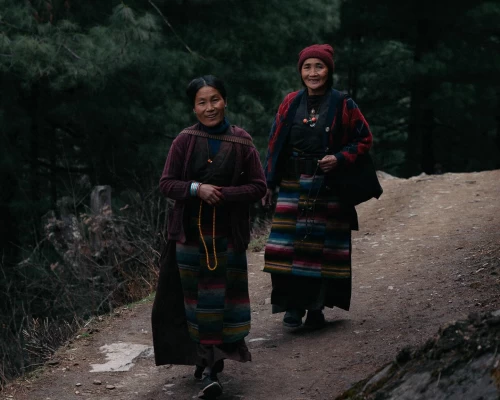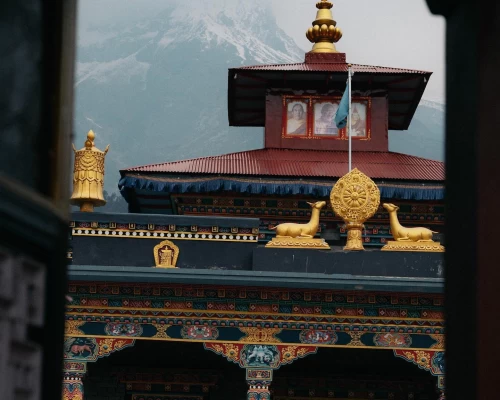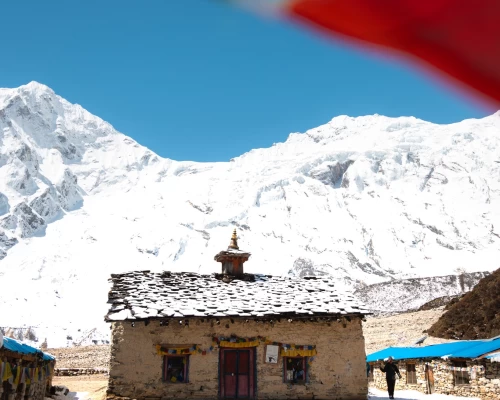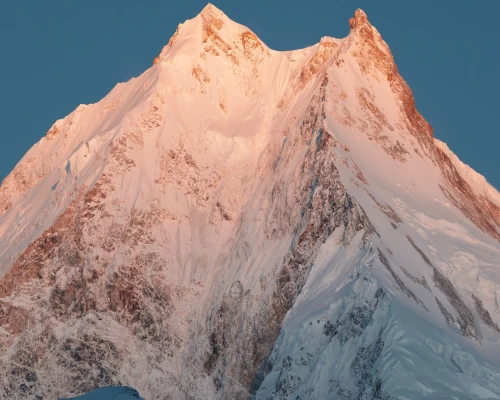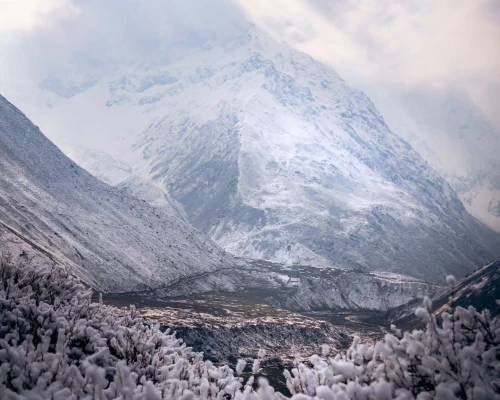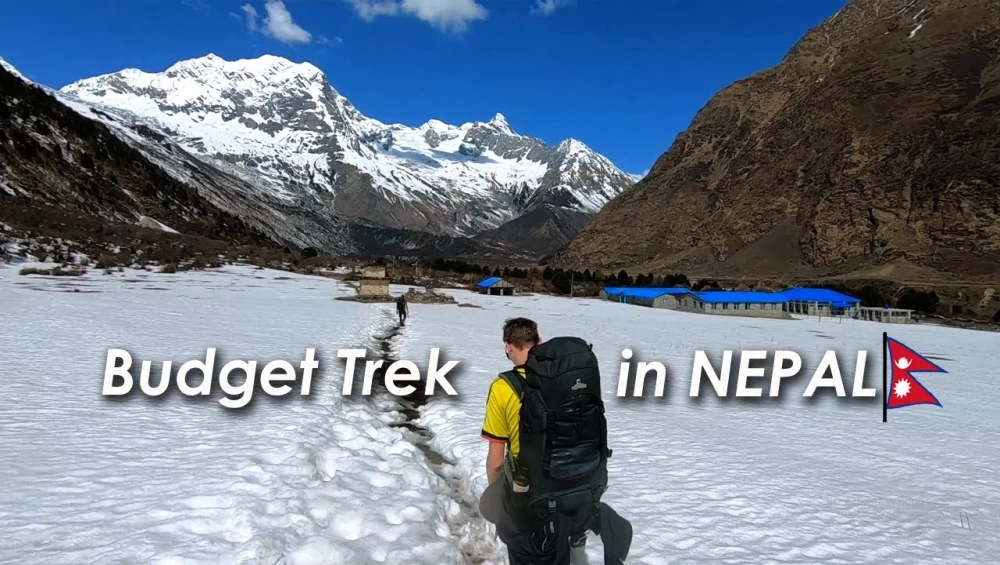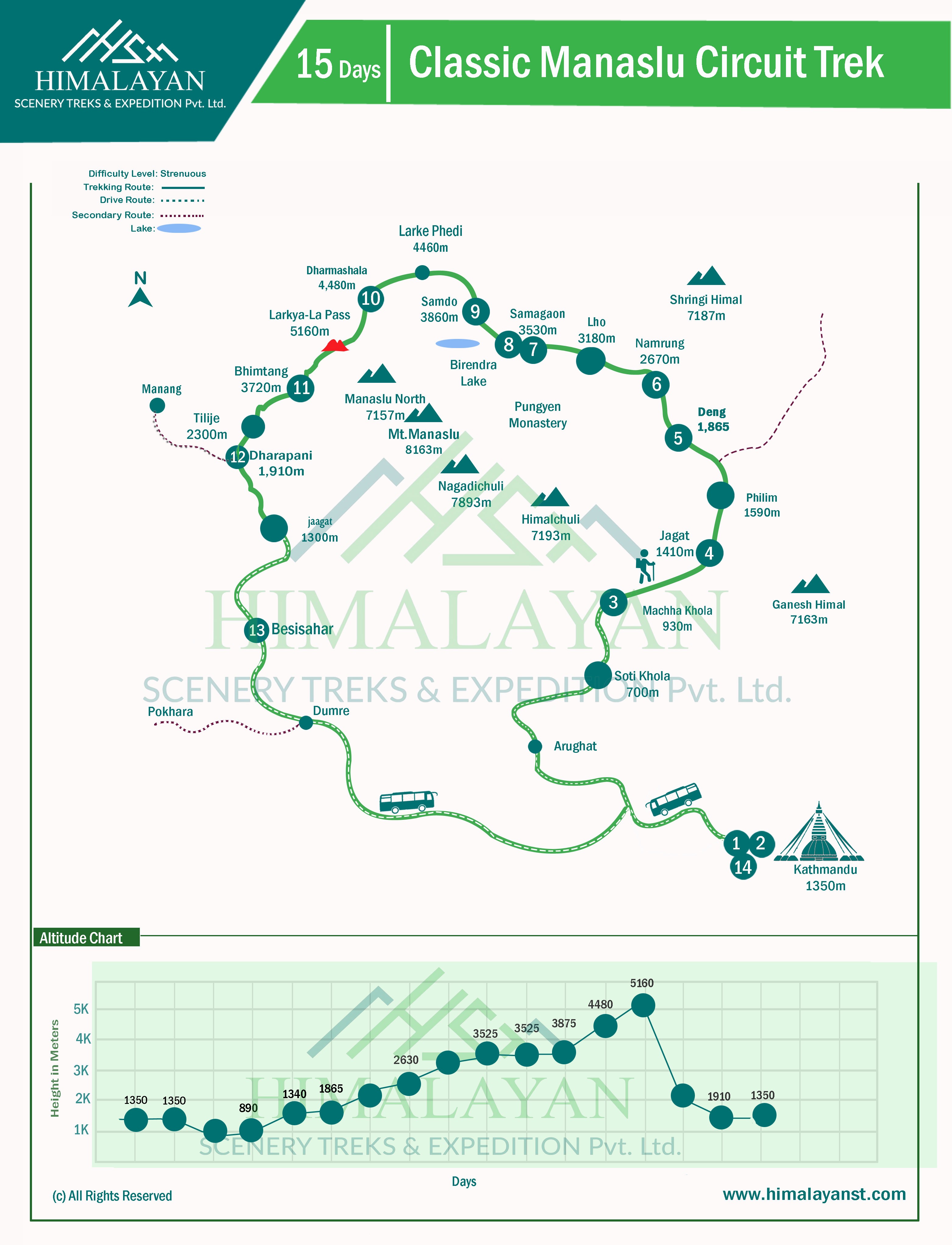Manaslu Circuit Trek: Food and Accommodation
As you will be journeying through the mountains, hills, and forests, you will get only the basic facilities for proper rest and recovery. The main Accommodation will be at the basic guest houses. Some guest houses tend to serve international dishes such as pizzas, pasta, Pancakes, and fried potatoes. For those who want a mix of Western touch, they can get the chance of that as well.
It is recommended not to bring unnecessary food. You can bring your energy-boosting snacks like granola bars, nuts, dried fruits, and chocolate from Kathmandu or villages nearby like Dharapani.
Water & Beverages on Manaslu Circuit Trekking
We use water purification tablets to double purify the drinking water if needed. You can refill your water bottles with boiled water in the tea houses for free. Do not drink water from a stream or tap. It may give you an upset stomach. Likewise, buying plastic water bottles will only increase your waste and will be very expensive.
Beverages like tea, coffee, Tibetan tea, local drinks, soft beverages, etc, are available along the trail. Many tea shops sell a range of local alcoholic drinks too. We advise you not to drink alcoholic drinks while gaining elevation. It'll dehydrate your body and make you vulnerable to altitude sickness.
Manaslu region Flora & Fauna
The Manaslu Conservation Area has six climatic zones, ranging from tropical to arctic. It is home to many species of flora & fauna. The conservation area hosts 110 species of birds, 33 species of mammals, 11 species of butterflies, and 3 kinds of reptiles.
Likewise, there are approximately 11 types of forests, 2000 species of plants, and 50 species of useful plants. While trekking, there's a high chance you may get to animals like the Himalayan tahr, blue sheep, snow leopard, marmot, etc, and one of those 110 species of birds.
Manaslu Trek Difficulty
Manaslu Circuit trek is marked as an off-the-beaten-path trek. It means the trail is steep, rugged, and uneven mostly. Likewise, the isolation of the Manaslu region from other parts of the Himalayas gives a new edge to the trekking experience. It is a high-altitude trek with lots of hurdles and difficulties. You'll cover approximately 180 km on this trek in the span of a handful of days.
The trail ascends and descends through steep forests and rough foothills. You'll walk on pastures and moraines. Similarly, crossing the Larkya La pass is strenuous too. The slippery slopes make climbing very tough. The descending part is as difficult as ascending, so do not take it lightly. As the elevation increases every day, you also have to face thin air pressure, which makes the walk even more exhausting.
There are risks of altitude sickness, and limited facilities on the way add to the challenges. Our expert guide will help you with any difficulties, but you also have to be self-aware and take care of your body while trekking.
Fitness Level & Preparation for the Trek
You walk for a minimum of 6 hours a day straight for 8/9 days on a rough Himalayan trail during the Manaslu circuit trek, 11 days. Your fitness for the Manaslu circuit trek should be strong. The trail also requires you to be mentally fit to endure all the limitations. You should be able to walk on an uphill route and tolerate elevation changes.
Overall, any fit individual with previous trekking experience can do the Manaslu circuit trek. To prepare for the trek, we recommend you work on building your stamina, leg muscles, and core body strength. You can do activities like cycling, swimming, or hiking to upgrade your stamina. Likewise, you can train at the gym to build your endurance.
To prepare yourself mentally, go without modern facilities like the internet and have simple meals. You have to understand it's a remote trek that demands you to leave modern conventional things behind and get uncomfortable.
*Note: Get used to your trekking boots. Do not wear brand-new trekking boots while walking.
Manaslu Circuit Trek for Beginners
The Manaslu circuit trek is not ideal for beginners. It is a very demanding trek. The trail is strenuous and can put a lot of pressure on beginner trekkers. The Manaslu circuit trail does not have infrastructure like the famous Everest base camp trail or the Annapurna base camp trail, which makes the journey even more challenging. In every aspect, the Manaslu trekking route is lacking.
Previous trekking experience and awareness of high altitude are necessary. The trekkers have to be physically and mentally strong. The Manaslu circuit trek also crosses a high mountain pass over 5,000 meters called Larkya La, which is too much for beginner trekkers.
How Safe Are Solo Female Trekkers in Manaslu?
As the Manaslu region is a restricted area, you cannot trek solo or with a guide (being a single member of the group). There has to be at least two trekkers in the group (not including the guide & porter). You can trek with your friend or join our group departure. If you want, we can also arrange a single traveller to join the group with you. Either way, you will be guided by a licensed, experienced guide in the mountains.
In terms of safety and security, solo female trekkers are very safe in Nepal and its mountains. However, in a new place, it's always best to be mindful of your surroundings. Learn about the culture and people of the places you are travelling to. Learn their ways of greeting each other and saying thank you. This will help you connect with them and show your respect.
Travel Insurance for Manaslu Trek
You cannot join the Manaslu circuit trek in Nepal without travel insurance. The trip entails the risk of altitude sickness and unpredictable events, such as a sudden drastic change in climate, trail blockage because of an unexpected landslide, etc. In an emergency like this, we can only give you a prompt rescue if you have travel insurance.
Likewise, if any medical emergency occurs that is not treatable with first aid, the only option left is to evacuate you to a hospital in Pokhara or Kathmandu. And again, we can only arrange a quick rescue operation if you have travel insurance. Without travel insurance, you have to show proof that you can pay the expenses, and it may take a lot of time to make a deal with the rescue party.
Therefore, get yourself well-covered travel insurance that has emergency air evacuation and medical bills coverage. Given the high altitude of the trek, we recommend you include rescue assistance up to 6,000 meters. You can also add other things like flight cancellation, loss or theft of luggage, etc, in the travel insurance. Make sure to double-check all the clauses in the travel insurance.
Communication & Internet
The team leader carries a satellite phone to use in the blackout zones to stay connected with the office team. The WiFi in the lodges at lower elevations comes with an additional service charge, which is not paid by the company. Once you go above 3,500 meters, there's no WiFi.
We recommend you buy a Nepali SIM card with ample data to use the internet while trekking. The network will not be stable on the upper part of the trail, but you'll get a chance to connect with your friends & family now and then.
Charging & ATM
You can charge your cell phone and camera by paying a few extra bucks in the teahouses. For long treks like the Manaslu circuit, we highly recommend getting spare batteries or a solar charger. This is your personal expense, so make sure to carry money with you while trekking.
With that being said, there's no ATM on the Manaslu circuit trekking route. You can only withdraw money in Kathmandu or exchange it. You cannot use foreign currency or a card on the trail.
Guides
Travellers should know that you can only get on this adventure when you have a minimum of 2 individuals. Solo travel has been banned for tourists in recent times. So, keep that in mind. Guides are necessary as you may not know what the dos and don’ts while the journey.
What should you pack for the Manaslu Circuit trek?
The following packing guidelines will help you pack for the Manaslu circuit trek. You have to pack as per the season you are travelling in. In the mountains of the Manaslu region, everything is scarce, so it's better to pack small things like toilet paper, toothpaste, etc.
Be mindful that you do not need to bring everything with you to Nepal for the trek. There are many gear shops in Thamel, Kathmandu, that sell high-quality trekking clothes & other gear at the best rate. You can also rent some of it.
- Head & Hand: Wool/Fleece Hat, Sun Cap, Lightweight Synthetic Liner Glove
- Upper Body: Short-Sleeved Shirts/T-shirts, Lightweight Top/Thermo Coat, Synthetic or Fleece Jacket, Down Insulated Jacket
- Lower Body: Underwear, Trekking Pants, Warm socks
- First Aid Kit: Water Purification Tablets, Sinex, Handy Plaster, Crack Bandage, Aspirin, Anti-Diarrhoea Capsule/Eldoper, Brufen/Ibuprofens, Diamox, Eye Drops, Lodine, Strepsils, Tincture, Antibiotic, Paracetamol
- Toiletries: Wet Tissues, Baby Wipes or Wet Towels, Hand Sanitisers & Hand wash, Laundry Soap, Bath Soap, Shampoo, Toothpaste/Toothbrush, Moisturisers, Garbage Bag, Zip-Lock Bags, Sunscreen (-50 Spf), Lip Guard (-20/-50 Spf)
- Miscellaneous: Swiss Knife, Trekking Poles, Sandals, Lightweight Hiking/Trekking Boots, Pocket Torch, Rucksacks (45 - 55 Ltr.), 1 Duffel Bag, Water Bottles, Pee Bottle, Umbrella/RainCoat, Pack Towel, Solar chargeable power bank (optional), Book/Board Game, Journal/Pen, Bars & Snacks, Spare batteries, Waterproof Stuff Sacks
- Travel Documents: Valid Visa, Valid Passport, Insurance Paper (Medical & Rescue), 4 PP Size Photo & Contact Address, Family/Company Contact Number & Address, Credit Card
